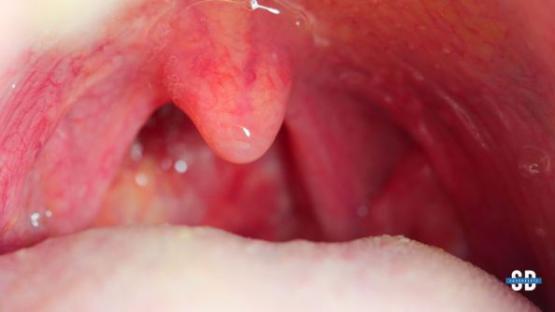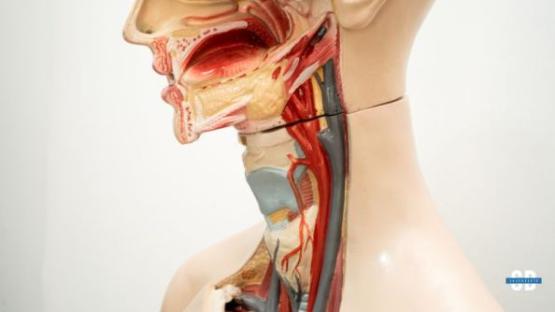A comprehensive guide to recognizing, treating, and preventing this common bacterial infection
Have you ever experienced a severely sore throat that came on quickly and made swallowing painful?
You might have had strep throat, a common that affects millions of Americans each year.
Unlike most sore throats caused by viruses, strep throat requires specific treatment to prevent complications and stop its spread to others.
Strep throat is an infection in your throat and tonsils caused by a type of bacteria called group A Streptococcus (group A strep).
This comprehensive guide will walk you through everything you need to know about strep throat â from identifying symptoms and seeking proper treatment to preventing future infections and avoiding serious complications.
What Is Strep Throat?
Strep throat is a bacterial infection in the throat and tonsils. While viruses cause most sore throats, only around 1 in 10 adults and 3 in 10 children with a sore throat actually have strep throat. This distinction is important because unlike viral infections, strep throat requires antibiotics to treat properly.

The bacteria that causes strep throat, group A Streptococcus (often called group A strep), is highly contagious. It spreads easily through respiratory droplets when an infected person coughs, sneezes, or even talks. You can also catch it by touching surfaces contaminated with these droplets and then touching your mouth or nose.
Strep throat most commonly affects children between the ages of 5 and 15, but people of all ages can get it. The infection is especially common during winter and early spring months when people spend more time indoors in close contact with each other.
Common Symptoms of Strep Throat
Recognizing the symptoms of strep throat is crucial for seeking timely medical attention. Unlike viral infections that develop gradually, strep throat symptoms often appear suddenly and can be quite severe.
Key Symptoms to Watch For:
- Severe sore throat: This usually comes on suddenly and makes swallowing painful
- Fever: Often above 101°F (38.3°C)
- Red and swollen tonsils: Sometimes with white patches or streaks of pus
- Tiny red spots on the roof of the mouth (called petechiae)
- Swollen, tender lymph nodes in the neck
- Pain when swallowing
- Headache
- Stomach pain and sometimes nausea or vomiting (especially in children)
What Strep Throat Usually Doesn’t Cause:
One symptom that strep throat doesn’t normally cause is a cough. If you have a cough and other cold symptoms, you probably have a viral infection, not strep throat. Other symptoms that usually point to a viral infection rather than strep throat include:
- Runny or stuffy nose
- Hoarseness
- Pink eye (conjunctivitis)
- Coughing
It’s worth noting that some people can test positive for group A strep bacteria but have no symptoms. These individuals are known as “carriers.”; They may not feel sick themselves but can potentially spread the bacteria to others.
How Strep Throat Spreads
Understanding how strep throat spreads can help you protect yourself and others from infection. The bacteria are extremely contagious and can spread in several ways:
- Direct contact with respiratory droplets: When an infected person coughs, sneezes, or talks, tiny droplets containing the bacteria can land in your mouth or nose.
- Close contact: Kissing or sharing food, drinks, or utensils with an infected person can transfer the bacteria.
- Surface contact: Touching surfaces contaminated with the bacteria and then touching your mouth, nose, or eyes.
People taking antibiotics for strep throat become less contagious over 24 to 48 hours. A person with untreated strep can infect others for two or three weeks. This is why getting proper treatment quickly is important not just for your health but for protecting those around you.
Diagnosing Strep Throat

If you suspect you or your child has strep throat, it’s important to see a healthcare provider. Since both viral and bacterial infections can cause sore throats, only a proper test can confirm if group A strep bacteria are responsible.
Diagnostic Tests:
- Rapid Strep Test: This quick test involves swabbing the back of the throat and can provide results within minutes. If positive, it confirms a strep infection.
- Throat Culture: If the rapid test is negative but strep is still suspected, your doctor may take another throat swab for a culture. This test takes longer (usually 24-48 hours) but is more accurate.
Cough is generally not a symptom of strep throat. Cough, hoarseness, runny nose, reddened eyes and other symptoms may point to a viral respiratory infection. Your doctor will consider these symptoms when deciding whether to test for strep.
Treatment for Strep Throat
Unlike viral sore throats that simply need to run their course, strep throat requires specific treatment to eliminate the bacteria. Here’s what you need to know about treating this infection:
Antibiotic Treatment
Antibiotics are the fastest cure. They can often help you start to feel better in a day or two. The most commonly prescribed antibiotics for strep throat include:
- Penicillin: The most traditional treatment
- Amoxicillin: Often preferred for children due to its more pleasant taste
- Cephalosporins: For those allergic to penicillin
Most antibiotic treatments for strep throat last about 10 days. You should start to feel better a day or two after you start them. Even if you feel better earlier, you should finish all your pills. Stopping antibiotics early can leave some bacteria alive, potentially leading to recurring infection or serious complications.
Home Remedies and Comfort Measures
While antibiotics work to kill the bacteria, these home remedies can help ease symptoms:
- Rest your voice and body: Your body needs energy to fight the infection
- Stay hydrated: Drink plenty of water and warm liquids like tea with honey
- Gargle with salt water: Mix 1/4 teaspoon of salt in 8 ounces of warm water
- Use throat lozenges: These can temporarily numb the throat (not for young children)
- Take over-the-counter pain relievers: Acetaminophen or ibuprofen can reduce pain and fever
- Use a humidifier: Adding moisture to the air can soothe a dry, scratchy throat
- Eat soft foods: Avoid spicy, acidic, or rough foods that might irritate your throat
Get plenty of rest. Sleep helps your body fight infection. If you have strep throat, stay home from work if you can. If your child is ill, keep him or her at home until there’s no sign of fever, and he or she feels better and has taken an antibiotic for at least 24 hours.
Complications of Untreated Strep Throat
One of the most important reasons to seek treatment for strep throat is to prevent potentially serious complications. When left untreated, the bacteria can spread to other parts of the body or trigger inflammatory responses that damage healthy tissues.

Possible Complications Include:
- Rheumatic Fever
Rheumatic fever can develop if strep throat, scarlet fever, or impetigo aren’t treated properly. Symptoms often include fever and painful, tender joints. This inflammatory condition can affect the heart, joints, nervous system, and skin.
If rheumatic fever is not treated promptly, rheumatic heart disease may occur. Rheumatic heart disease weakens the valves between the chambers of the heart. Severe rheumatic heart disease can require heart surgery and result in death.
- Kidney Inflammation (Post-streptococcal Glomerulonephritis)
The connection between strep and the kidneys is that after your child has had either a throat or skin strep infection, they can develop post-streptococcal glomerulonephritis (PSGN). The strep bacteria travel to the kidneys and make the filtering units of the kidneys (glomeruli) inflamed, causing the kidneys to be less able to filter urine.
- Other Potential Complications:
- Ear or sinus infections
- Abscesses around the tonsils
- Scarlet fever (a rash associated with strep infection)
- Invasive group A strep infection (a rare but severe form of infection)
These complications highlight why proper diagnosis and complete antibiotic treatment are so important when dealing with strep throat.
Prevention Strategies
While it’s not always possible to avoid strep throat, especially among school-aged children, there are several effective strategies to reduce your risk of infection:
Hygiene Practices
- Proper handwashing: Wash your hands often for at least 20 seconds. Cover your mouth and nose with a tissue or elbow when you cough or sneeze. Use hand sanitizer when hand washing isn’t possible.
- Avoid sharing personal items: Don’t share drinking glasses, water bottles, utensils, or towels with others, especially during cold and flu season.
- Clean frequently touched surfaces: Regularly disinfect doorknobs, light switches, remote controls, and other commonly touched items, especially if someone in your household is sick.
Face Masks
To reduce your risk of spreading or catching strep throat with a mask on, ensure the mask is properly fitted and that you stay at least six feet away from anyone who may be contagious. Masks can be particularly helpful in reducing transmission when:
- You or a family member has strep throat
- You’re caring for someone who is sick
- You’re in crowded indoor spaces during peak illness season
- You work with children or in healthcare settings
Social Distancing
If you’re around someone who is sick, consider wearing a mask and make sure you wash your hands often, especially before eating or preparing food. Stay away from people who have obvious symptoms of throat infections when possible.
When to Stay Home
People taking antibiotics for strep throat become less contagious over 24 to 48 hours. A person with untreated strep can infect others for two or three weeks. To prevent spreading strep throat:
- Stay home from work, school, or daycare until you’ve been on antibiotics for at least 24 hours and no longer have a fever
- Avoid public places while symptomatic
- Replace your toothbrush after you’re no longer contagious (usually after 24-48 hours on antibiotics)
Special Considerations for Different Age Groups
Strep Throat in Children
Children between the ages of 5 and 15 are most susceptible to strep throat. Some special considerations for this age group include:
- Children may not always complain of a sore throat but might instead report stomach pain or headaches
- People with viral tonsillitis have milder symptoms than those with bacterial tonsillitis (strep throat). This can make it harder to distinguish between the two in children
- School and daycare environments make transmission more likely
- Children should stay home until they’ve been on antibiotics for at least 24 hours and are fever-free
Strep Throat in Adults
While less common in adults, strep throat still affects many grown-ups each year:
- Adults may experience more severe symptoms
- Work environments where many people gather indoors can increase transmission risk
- Adults with children at home have a higher risk of contracting strep throat
- Those who work with children (teachers, daycare workers, healthcare providers) face increased exposure
Strep Throat in Elderly and Immunocompromised Individuals
For those with weakened immune systems or advanced age, special attention is warranted:
- Symptoms may be less pronounced but complications can be more serious
- Prompt medical attention is especially important
- Prevention strategies should be emphasized
- These individuals should avoid close contact with people known to have strep throat
Frequently Asked Questions About Strep Throat
Can you get strep throat more than once?
Yes, unfortunately having strep throat once doesn’t make you immune to future infections. Some people are more susceptible to recurring strep throat than others.
Can you get strep throat if you don’t have tonsils?
You can still get the infection if you don’t have tonsils â it doesn’t make you immune. However, if you’ve had your tonsils removed, your risk of getting strep throat decreases. You may get the infection less often. In addition, your symptoms may not be as severe.
How long is strep throat contagious?
People taking antibiotics for strep throat become less contagious over 24 to 48 hours. A person with untreated strep can infect others for two or three weeks.
Will strep throat go away on its own?
Strep throat will go away on its own after about a week. However, antibiotics will resolve your symptoms faster, make you less contagious, and reduce the risk of complications. Because of the risk of serious complications, it’s always recommended to seek proper treatment rather than waiting it out.
How is strep throat different from tonsillitis?
Tonsillitis is a painful inflammation or infection of the tonsils, the tissue masses located at the back of the throat. While strep throat specifically refers to a streptococcal bacterial infection, tonsillitis can be caused by either viruses or bacteria (including strep). One key difference is that tonsillitis involves inflammation of the tonsils, while strep throat involves a specific bacterium infecting the throat. This could also affect the tonsils.
How quickly will antibiotics work for strep throat?
Most people begin to feel better within 24-48 hours after starting antibiotics. However, it’s crucial to complete the entire course of antibiotics (typically 10 days) even if you feel better sooner.
When to See a Doctor
While many sore throats are caused by viruses and will resolve on their own, it’s important to know when to seek medical attention. Contact your healthcare provider if you or your child experiences:
- A severe sore throat that makes swallowing difficult
- A sore throat accompanied by a fever over 101°F (38.3°C)
- A sore throat lasting more than 48 hours
- A sore throat with swollen, tender lymph nodes in the neck
- A rash along with a sore throat
- Difficulty breathing or swallowing
- Blood in saliva or phlegm
- Excessive drooling (in young children)
- Symptoms of dehydration (dry mouth, decreased urination, dizziness)
- A history of rheumatic fever or kidney problems
Remember, only a healthcare provider can determine whether your sore throat is caused by strep bacteria and requires antibiotics.
Conclusion
Strep throat is a common bacterial infection that, while uncomfortable, is highly treatable with proper medical care. By recognizing the symptoms early, seeking appropriate testing and treatment, and following prevention strategies, you can minimize the impact of this infection on your life and reduce the risk of serious complications.
If you suspect you or a family member has strep throat, don’t hesitate to contact your healthcare provider. Prompt diagnosis and treatment with antibiotics can help you feel better quickly and prevent the spread of infection to others.
Remember that good hygiene practicesâlike regular handwashing, covering coughs and sneezes, and not sharing personal itemsâremain your best defense against strep throat and many other contagious illnesses.
This article is for informational purposes only and does not constitute medical advice. Always consult with a qualified healthcare provider for diagnosis and treatment of strep throat or any other medical condition.







